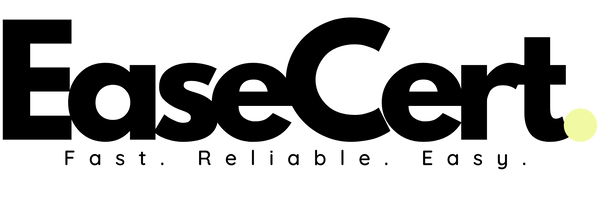CE Marking: A Comprehensive Guide for Global Market Access
CE marking is a mandatory conformity label that indicates a product has met European Union (EU) requirements for safety, health, and environmental protection. The initials “CE” stand for “Conformité Européenne,” meaning “European Conformity.” This mark allows the free movement of goods within the European Economic Area (EEA), which includes the 27 EU countries as well as Iceland, Liechtenstein, and Norway.
Contrary to common belief, CE marking is not a quality mark. It is a legal requirement for certain product groups and serves as the manufacturer’s declaration that the product complies with EU legislation.
Why CE Marking Matters
For manufacturers, CE marking is a passport to access one of the largest single markets in the world. For importers and distributors, it assures that the products they place on the EU market meet required standards. For consumers and market surveillance authorities, CE marking offers a visible indication that essential product requirements have been fulfilled.
CE marking also plays a role in international trade. Many non-EU countries recognize the CE mark as a trusted benchmark of product safety and conformity, even though it is not a substitute for their own regulatory schemes.
Which Products Require CE Marking?
CE marking is required for a wide array of product groups, each governed by one or more EU directives or regulations. The main categories include:
- Electrical and electronic equipment (Low Voltage Directive, EMC Directive)
- Machinery (Machinery Directive)
- Medical devices (Medical Device Regulation – MDR)
- Toys (Toy Safety Directive)
- Personal protective equipment (PPE Regulation)
- Construction products (Construction Products Regulation – CPR)
- Pressure equipment (Pressure Equipment Directive – PED)
- Measuring instruments (Measuring Instruments Directive – MID)
- Radio and telecommunications equipment (Radio Equipment Directive – RED)
Each directive contains essential requirements for safety, performance, labeling, and conformity assessment procedures.
Steps to Obtain CE Marking
Manufacturers must follow a structured conformity assessment process to affix the CE mark. The specific steps may vary depending on the product and applicable directive, but the typical process involves:
1. Identify Applicable EU Legislation
Determine which CE directives and harmonized European standards apply to your product. A product may fall under more than one directive.
2. Assess Conformity
Ensure the product meets essential requirements, which may involve internal checks, documented risk assessments, or third-party testing.
3. Choose the Conformity Assessment Route
Depending on the risk category of the product, you may need to carry out self-assessment or engage a Notified Body—a third-party organization designated by an EU member state.
4. Compile Technical Documentation
The technical file must demonstrate compliance and typically includes:
- Product description and intended use
- Design and manufacturing drawings
- Risk assessment
- Test reports and certifications
- Identification of applicable standards
- Instructions and labeling
This file must be available to authorities upon request for at least 10 years after the product is placed on the market.
5. Draft the EU Declaration of Conformity
The Declaration of Conformity (DoC) is a formal, legally binding document signed by the manufacturer or authorized representative, stating that the product meets all relevant requirements.
6. Affix the CE Marking
The CE logo must be affixed visibly, legibly, and indelibly to the product, packaging, or accompanying documents. Its dimensions and placement must conform to official guidelines.
Roles and Responsibilities of Economic Operators
Manufacturers
- Ensure product compliance with EU legislation
- Maintain technical documentation and DoC
- Affix CE marking before placing products on the market
Authorized Representatives
- Act on behalf of non-EU manufacturers
- Keep documentation available for market authorities
- Cooperate with authorities and handle compliance inquiries
Importers
- Verify that non-EU products meet EU requirements
- Ensure that the CE mark and accompanying documentation are in place
- Keep records and inform authorities of non-conformity
Distributors
- Verify CE marking and that documentation is provided
- Store and transport products in compliance with requirements
- Cooperate with authorities in case of non-compliance
Common Pitfalls and Consequences of Non-Compliance
Failure to comply with CE marking obligations can lead to:
- Detention or recall of products by customs or market surveillance authorities
- Financial penalties and legal enforcement
- Damage to brand reputation and commercial losses
- Ineligibility to sell the product within the EU
Authorities conduct both proactive (planned inspections) and reactive (complaint-based) enforcement. Technical documentation and declarations must be ready for inspection at any time.
CE Marking Outside the EEA
CE marking is not legally required outside the EEA, but it is sometimes used voluntarily by manufacturers to indicate conformity with European standards. While this can enhance credibility, it does not replace regulatory requirements in other jurisdictions such as the United States, Canada, or Australia.
Manufacturers should be cautious not to misuse the CE mark in non-EEA countries, as this can lead to misunderstandings or even regulatory violations if misrepresented.
How EaseCert Can Help
Navigating CE marking can be complex—especially for startups, e-commerce sellers, or exporters entering the EU market. EaseCert offers a full-service approach tailored to each client’s product type, market goals, and documentation needs.
Our services include:
- Identifying applicable EU directives and harmonized standards
- Reviewing product design and documentation
- Supporting internal or third-party product testing
- Preparing technical files and risk assessments
- Drafting and reviewing EU Declarations of Conformity
- Acting as the Authorized Representative in the EU
- Advising on correct CE mark usage and labeling
We also work closely with Notified Bodies, accredited labs, and regulatory experts across Europe to ensure streamlined access to the EU market and full compliance with applicable legislation.
Get Started
If you’re looking to access the EU market or bring your product into full regulatory compliance, our team at EaseCert is ready to support you.
Let us help you bring your products safely and legally to the European market—without unnecessary delays or complications.
